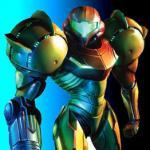This may help others reading, and I know it will help my general understanding:
My impression of console development is that it gets finalized at some point. The foundation, so to speak, is there. In this case, Nintendo, AMD, and IBM know they are going with a GPU, most likely custom from the 6 series (2010), and the tri-core Power 7/750 base chip. Leaving the gamepad out for a moment, I would presume the only thing left for the box itself would be the clock speeds, amount of cache, and so forth. Or, put another way, that initial dev kit, with the 4850 inside, it should have been the target for the OS.
As they got closer with the gamepad and finalized specs, I would have thought that the OS would have been patched along the way.
What I am having trouble understanding is how the OS was in such a state at launch, and how the dev tools were to the point where launch games were using 2 cores.
Note: I am also under the impression that the MCM is simply a customized e6760 and IBM solution to fill in the gaps. Without a real target game from Nintendo to show off technical capabilities, it is hard for someone not really tech savvy (like myself) to rationalize the issues they have had outside of the gamepad development (which is an amazing achievement along with the low power consumption).
The original prototypes and the software environment was built around weaker hardware than ended up in the system, that is true.
Because it took so long to get the hardware finalized, the OS itself was not optimized for it by the time they were preparing for launch. This is a big reason behind the utter lack of marketing, Nintendo are sandbagging the Wii U intentionally (they know early adopters will buy into it anyway, they just thought there would be more) because they themselves felt the software environment was not ready.
The real problem is that the GPU is so very divergent from the original target hardware, that all of the tools would have had to be rewritten both to take advantage of the GPU at a basic level, and to properly use the gamepad. For the gamepad they needed to essentially upgrade the target hardware in order to get the performance they were looking for with the gamepad, and AMD tech like eyefinity fits perfectly.
It isn't just a customized 6760, its the other way around, in fact. Its a custom chip that happens to utilize the AMD unified shader cores from the 6760 that they licensed. It's a brand new animal that no one was prepared for.
I assume they still haven't nailed down the best clock speeds, and the cache on die was based on their budget for the chip. They really thought of everything, and companies like Shin'en that really understand GPU tech through and through are able to be authoritative on the fact that there is plenty of power there if you know how to use the system properly, and everything is designed for extreme efficiency. No clock cycles wasted, as it were.
The great thing is that many of us are already satisfied with how the system basically operates, and that says something, because Nintendo isn't, and they will continue to improve all aspects.
Edited by routerbad, 30 May 2013 - 09:15 PM.

















